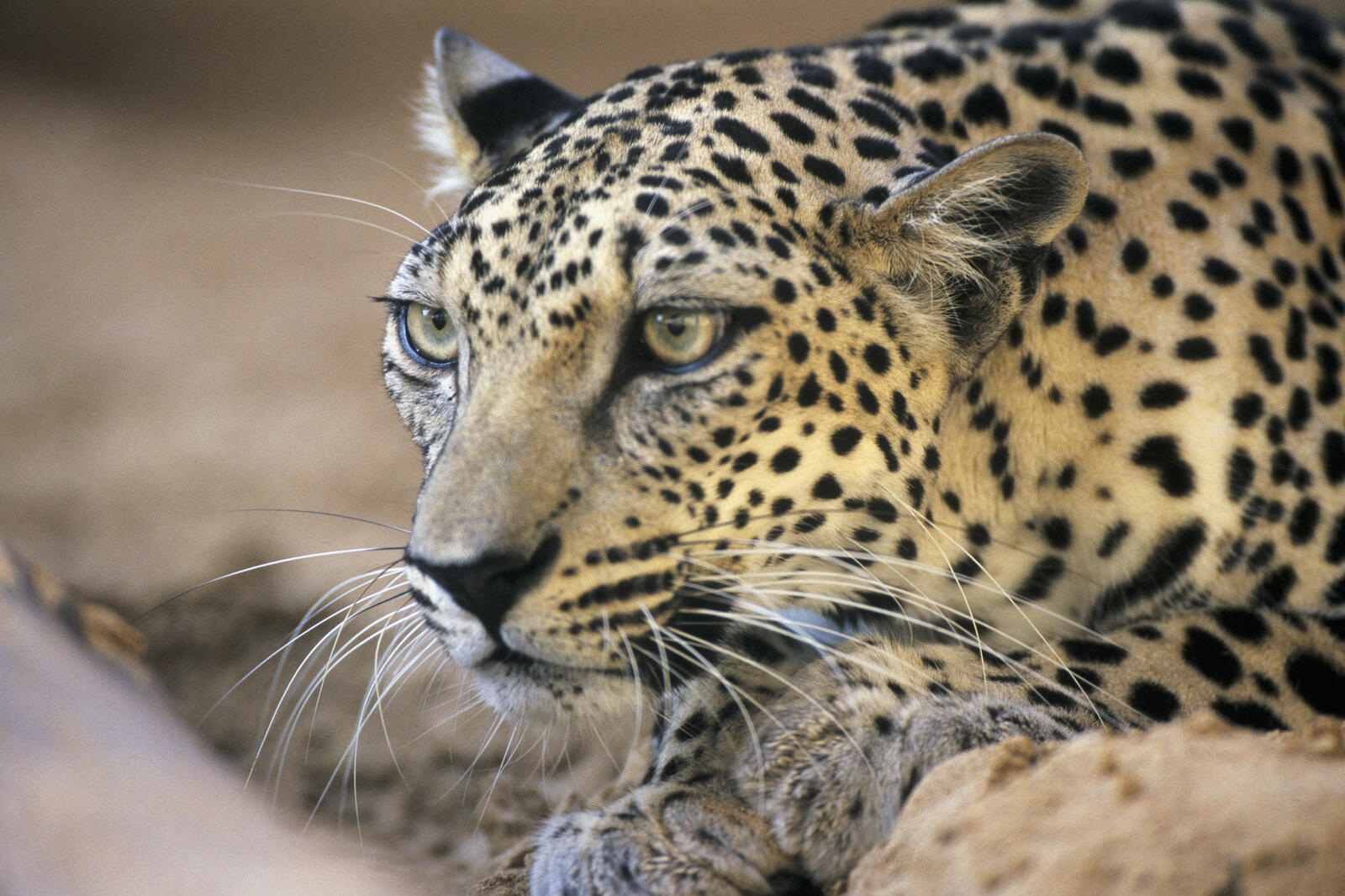We share our story with the world
Committed to protecting and preserving it from extinction by encouraging the community, decision-makers and the global community, we aim to change the fate of one of the most endangered species on our planet.
Locations of the Arabian Leopard
The Arabian Leopard survives today in only three countries: Saudi Arabia, Oman, and Yemen. The total population in the wild is less than 120 leopard.

IUCN, 2011. Distribution map for Arabian Leopard Distribution map for Arabian Leopard Panthera pardus nimr

Key Facts
Numbers in The Wild:
>120
IUCN Red List status:
Critically Endangered
Life Span:
14-19 years in the wild
Weight:
- Male: 30kg (66 lbs)
- Female: 20kg (44 lbs)
Habitat:
Rugged mountains, preferably in areas with tree cover and water. It formerly occurred in lowland wadis as well.
Length:
- Male: 182 - 203cm (72-80')
- Female: 160 - 192cm (63-76')
Prey:
A wide range of prey, including Ibex, Gazelles, Rock Hyrax, and game birds. It will also hunt reptiles and amphibians opportunistically.
Can you Spot the Difference?
Threats to the Arabian Leopard’s survival
Three key ongoing challenges to solve:
The Arabian Leopard has been losing its natural habitat due to growing human settlements and the expansion of agricultural activities, such as livestock grazing and cultivation. It has also faced depletion of prey populations, such as ibex and gazelles, as a result of increased human hunting. The leopard has resorted to feeding on livestock such as goats and sheep - increasing the threat of persecution. As a result, human-leopard conflict is more likely to occur.
People still directly kill the Arabian Leopard, especially in areas where leopards resort to preying on livestock following the loss of natural prey. These cases typically involve farmers poisoning the carcasses of predated livestock, killing any animal that feeds on the carcass. There are also reports of people shooting leopards or building traps to catch and kill them for fear that they may attack livestock.
There is not enough awareness about the critical situation that the Arabian leopard is facing. Many people are unaware of the Arabian Leopard’s status, or the need for intervention. Furthermore, there are too few protected areas to conserve the leopard, increasing the chance of human-leopard conflict. Finally, although there are laws in place to prevent leopard persecution, the enforcement of these laws is currently insufficient.

